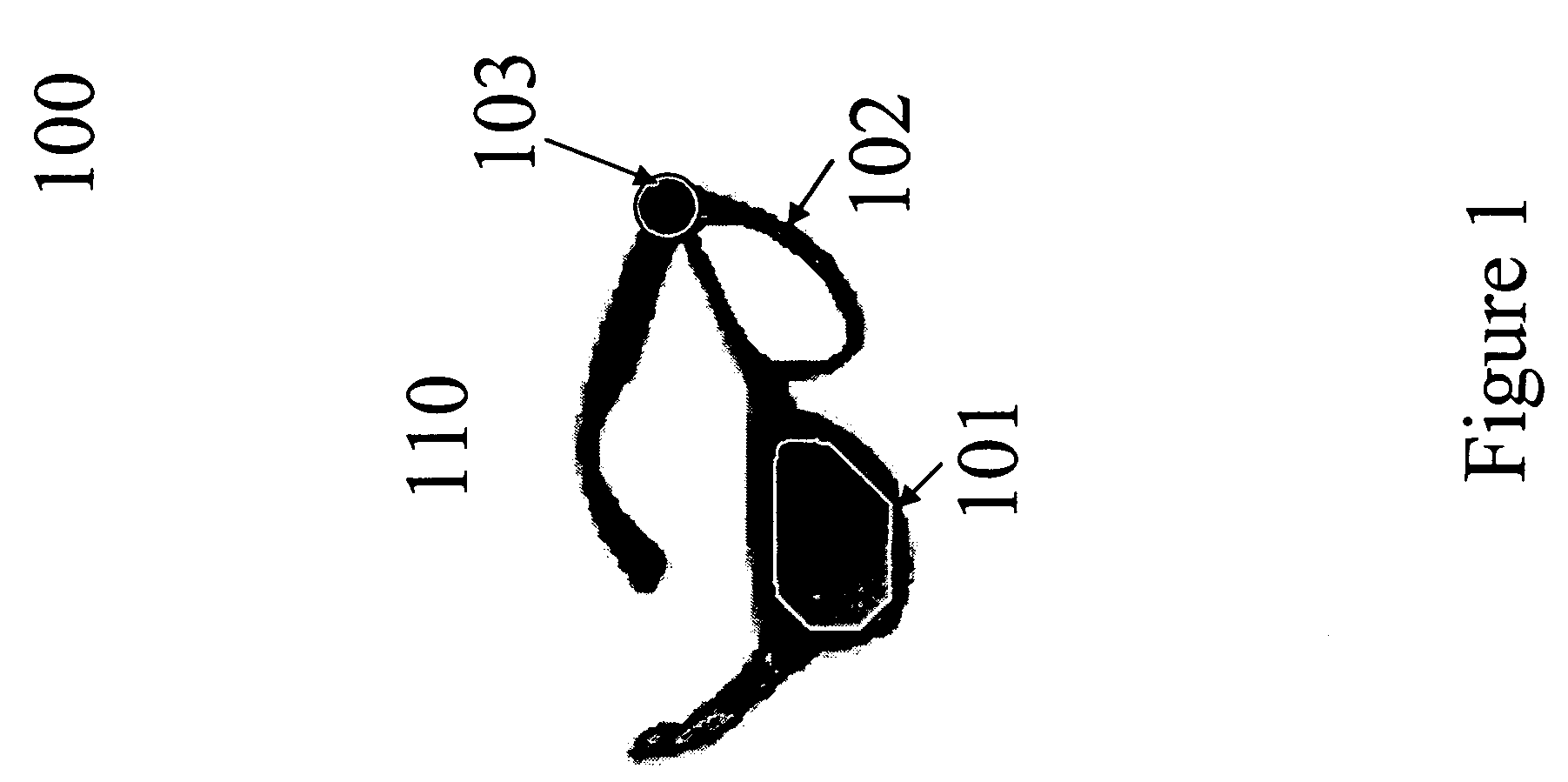System and method for Pulfrich Filter Spectacles
a filter and spectacle technology, applied in the field of motion pictures, can solve the problems of improper synchronization, the 3-d movie fad the improper synchronization of the early to mid-1950s however soon faded, so as to reduce eye strain and discomfort.
- Summary
- Abstract
- Description
- Claims
- Application Information
AI Technical Summary
Benefits of technology
Problems solved by technology
Method used
Image
Examples
embodiment
Preferred Embodiment
[0152]FIG. 1
[0153]FIG. 1 is a block diagram 100 illustrating a preferred embodiment of the Pulfrich Filter Spectacles invention for connection-free Pulfrich glasses
[0154]In the preferred embodiment, the viewing glasses 110 consist of a right lens 101, a left lens 102, and a Glass Lens Controller Unit (GLCU) 103. The GLCU 103 includes an audio receiver or transducer to receive the audio track of the movie; an highpass audio filter to eliminate audio frequencies below a threshold value of 45K Hz; an analog-to-digital converter to convert the filtered signal to a digital signal, and a special purpose processor running digital signal processing algorithms to process the filtered audio signal, identify the synchronization events embedded in the audio, and send signals to independently control the darkness of the right and left lenses based on the detected synchronization events.
[0155]For exemplary purposes, FIG. 1 shows the Pulfrich Filter Spectacles in one of the thr...
PUM
 Login to View More
Login to View More Abstract
Description
Claims
Application Information
 Login to View More
Login to View More - R&D
- Intellectual Property
- Life Sciences
- Materials
- Tech Scout
- Unparalleled Data Quality
- Higher Quality Content
- 60% Fewer Hallucinations
Browse by: Latest US Patents, China's latest patents, Technical Efficacy Thesaurus, Application Domain, Technology Topic, Popular Technical Reports.
© 2025 PatSnap. All rights reserved.Legal|Privacy policy|Modern Slavery Act Transparency Statement|Sitemap|About US| Contact US: help@patsnap.com



